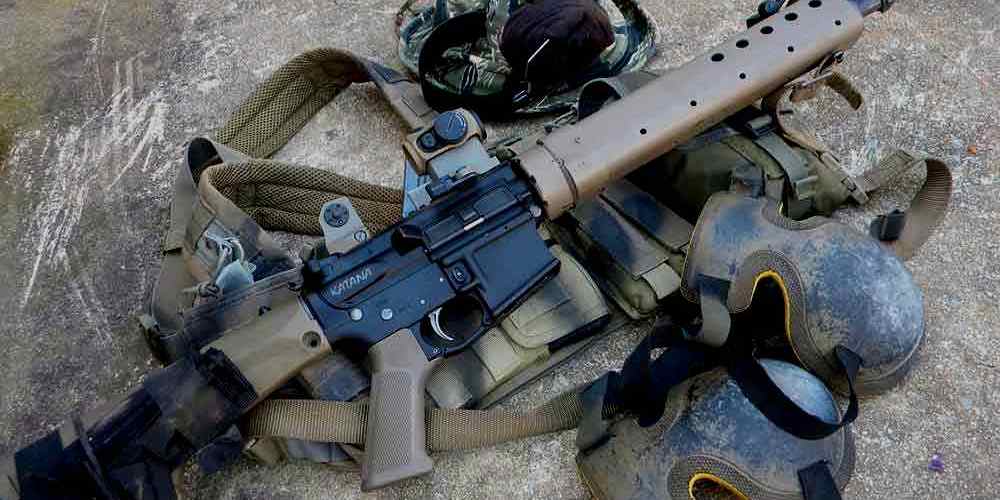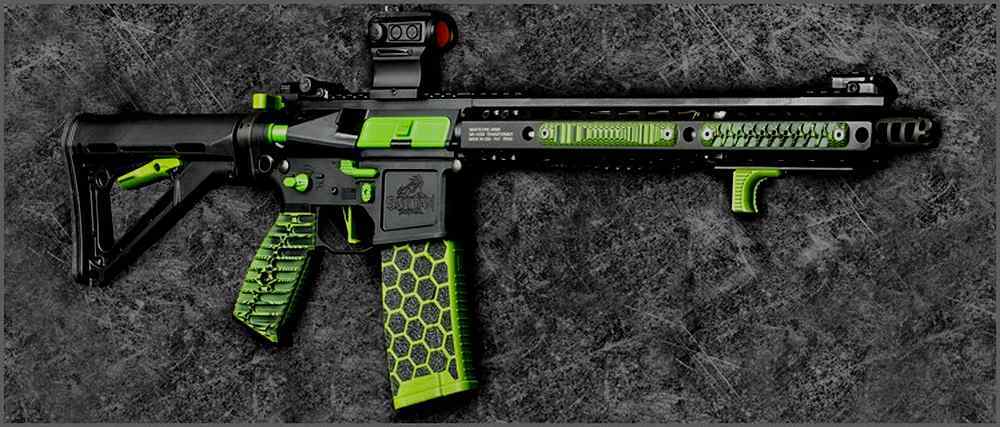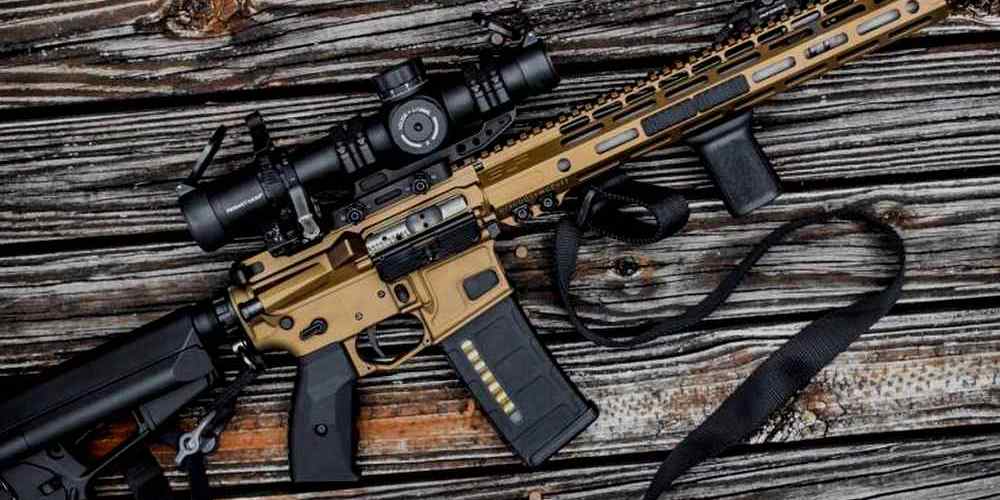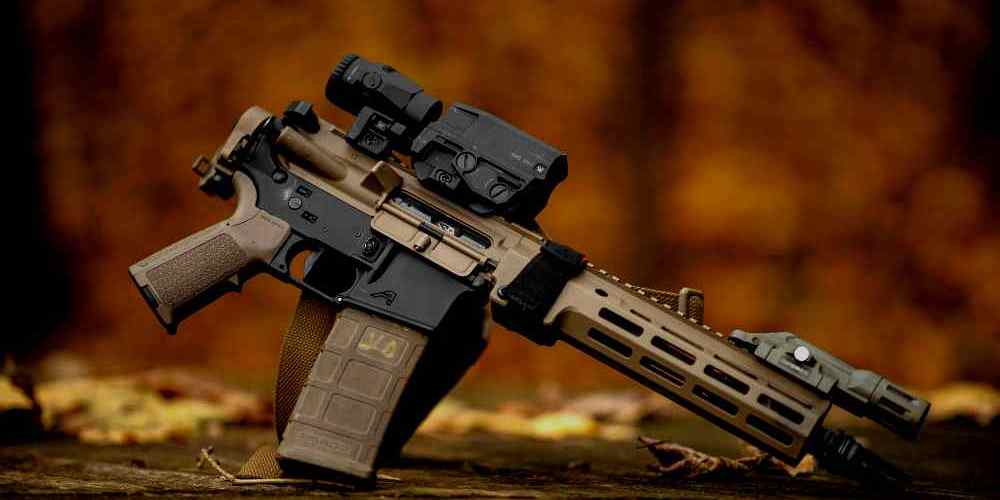“Unlocking limitless customization with 3D printing for your AR15.”
Benefits of Using 3D Printing for Custom AR15 Parts
When it comes to customizing your AR15 rifle, the possibilities are endless. From different grips and stocks to unique rail systems and muzzle devices, there are countless ways to make your firearm truly your own. One of the most exciting developments in the world of custom AR15 parts is the use of 3D printing technology. Leveraging 3D printing for custom AR15 parts offers a wide range of benefits, from cost savings to increased customization options.
One of the biggest advantages of using 3D printing for custom AR15 parts is the ability to create unique, one-of-a-kind designs. With traditional manufacturing methods, such as CNC machining or injection molding, there are often limitations on the complexity of the parts that can be produced. However, with 3D printing, virtually any shape or design can be created, allowing for truly personalized and innovative parts.
In addition to increased design flexibility, 3D printing also offers significant cost savings compared to traditional manufacturing methods. Because 3D printing is an additive manufacturing process, there is minimal waste material, which can result in lower production costs. This cost-effectiveness makes 3D printing an attractive option for individuals looking to create custom AR15 parts without breaking the bank.
Another benefit of using 3D printing for custom AR15 parts is the speed at which parts can be produced. Traditional manufacturing methods often require lengthy lead times, as molds or tooling must be created before production can begin. With 3D printing, parts can be designed and produced in a matter of hours, allowing for rapid prototyping and iteration. This quick turnaround time is especially useful for individuals looking to test out different designs or make modifications to existing parts.
Furthermore, 3D printing allows for on-demand production, meaning that parts can be produced as needed, rather than in large batches. This can be particularly advantageous for individuals looking to create custom AR15 parts for a specific project or application. Whether you need a one-off part or a small batch of parts, 3D printing offers the flexibility to produce parts in the quantities you need, when you need them.
In addition to the benefits of increased design flexibility, cost savings, and rapid production, 3D printing also offers the opportunity to experiment with new materials and manufacturing techniques. With advancements in 3D printing technology, a wide range of materials can now be used for printing custom AR15 parts, including high-strength polymers, metals, and even carbon fiber. This opens up new possibilities for creating lightweight, durable, and high-performance parts that may not have been possible with traditional manufacturing methods.
Overall, leveraging 3D printing for custom AR15 parts offers a host of benefits, from increased design flexibility and cost savings to rapid production and the ability to experiment with new materials. Whether you’re looking to create a unique grip, stock, or rail system for your AR15 rifle, 3D printing provides a versatile and cost-effective solution for bringing your custom designs to life. So why wait? Start exploring the world of 3D printing for custom AR15 parts today and take your firearm customization to the next level.
Step-by-Step Guide to Designing Custom AR15 Parts with 3D Printing
If you’re a gun enthusiast looking to customize your AR15 rifle, 3D printing can be a game-changer. With the ability to design and create custom parts right in your own home, the possibilities are endless. In this step-by-step guide, we’ll walk you through the process of leveraging 3D printing to create custom AR15 parts.

The first step in designing custom AR15 parts is to identify the specific part you want to create. Whether it’s a new handguard, grip, or magazine extension, having a clear vision of what you want to achieve is crucial. Once you have your design in mind, it’s time to move on to the next step.
The next step is to create a digital model of your custom part. This can be done using CAD (Computer-Aided Design) software, which allows you to design and manipulate 3D objects with precision. If you’re new to CAD software, there are plenty of online tutorials and resources available to help you get started.
Once you have your digital model ready, it’s time to prepare it for 3D printing. This involves converting your design file into a format that is compatible with your 3D printer. Most 3D printers accept STL files, so be sure to save your design in this format before moving on to the next step.
With your design file ready, it’s time to set up your 3D printer. Make sure your printer is calibrated and that you have the appropriate filament loaded. Depending on the complexity of your design, printing times can vary, so be prepared to wait for your custom part to take shape.
Once your custom part has finished printing, it’s time to remove it from the build plate and clean up any excess material. Depending on the quality of your printer and the complexity of your design, you may need to do some post-processing to ensure a smooth finish.
With your custom AR15 part in hand, it’s time to test it out on your rifle. Make sure it fits properly and functions as intended before taking it to the range. If everything looks good, congratulations – you’ve successfully leveraged 3D printing to create a custom AR15 part!
In conclusion, 3D printing offers gun enthusiasts a unique opportunity to customize their AR15 rifles with custom parts. By following this step-by-step guide, you can design and create your own custom parts right in your own home. So why wait? Start designing your custom AR15 parts today and take your rifle to the next level.
Top 3D Printing Materials for Durable AR15 Parts
When it comes to customizing your AR15 rifle, 3D printing can be a game-changer. With the ability to create unique and durable parts, you can truly make your rifle your own. However, not all 3D printing materials are created equal. In this article, we will explore the top 3D printing materials for creating durable AR15 parts.
One of the most popular materials for 3D printing AR15 parts is ABS (Acrylonitrile Butadiene Styrene). ABS is known for its strength and durability, making it an ideal choice for creating parts that will withstand the rigors of shooting. Additionally, ABS is relatively easy to work with and can be sanded and painted to achieve a professional finish.
Another popular material for 3D printing AR15 parts is PLA (Polylactic Acid). PLA is a biodegradable plastic that is derived from renewable resources such as cornstarch or sugarcane. While PLA is not as strong as ABS, it is still a viable option for creating lightweight parts that do not require as much durability. PLA is also known for its ease of use and is a great choice for beginners or those looking to experiment with 3D printing.
For those looking for a material that offers the best of both worlds, PETG (Polyethylene Terephthalate Glycol) is an excellent choice. PETG is a strong and durable material that is resistant to chemicals and moisture, making it ideal for creating parts that will be exposed to harsh conditions. Additionally, PETG is easy to work with and can be sanded and painted to achieve a professional finish.
When choosing a material for 3D printing AR15 parts, it is important to consider the specific requirements of the part. For example, if you are creating a part that will be exposed to high temperatures, you may want to choose a material that is heat resistant. Similarly, if you are creating a part that will be exposed to moisture, you may want to choose a material that is water resistant.
In addition to the material itself, it is also important to consider the printing process. For example, if you are creating a part that requires a high level of detail, you may want to choose a material that can be printed at a high resolution. Similarly, if you are creating a part that requires a high level of strength, you may want to choose a material that can be printed with a high infill percentage.
In conclusion, 3D printing offers a unique opportunity to customize your AR15 rifle with durable and unique parts. By choosing the right material for your specific needs, you can create parts that will stand up to the rigors of shooting while also adding a personal touch to your rifle. Whether you choose ABS, PLA, or PETG, the possibilities are endless when it comes to leveraging 3D printing for custom AR15 parts.
Tips for Finishing and Assembling 3D Printed AR15 Parts
When it comes to customizing your AR15, 3D printing can be a game-changer. With the ability to create unique parts and accessories, you can truly make your rifle your own. However, 3D printing can be a bit daunting if you’re new to the technology. In this article, we’ll walk you through some tips for finishing and assembling 3D printed AR15 parts to help you get the most out of your custom build.
First and foremost, it’s important to ensure that your 3D printed parts are properly finished before assembling them onto your rifle. This includes removing any support material, sanding down rough edges, and applying a primer and paint if desired. This will not only improve the aesthetics of your parts but also ensure that they function properly when installed on your AR15.
When sanding down your 3D printed parts, it’s best to start with a coarse grit sandpaper to remove any large imperfections. Once you’ve smoothed out the surface, switch to a finer grit sandpaper to achieve a smooth finish. Be sure to take your time and sand evenly to avoid creating any uneven surfaces that could affect the fit of your parts on your rifle.
After sanding, it’s a good idea to apply a primer to your parts before painting them. This will help the paint adhere better to the surface and provide a more durable finish. Be sure to use a primer that is compatible with the type of paint you plan to use and allow it to dry completely before applying the paint.
When assembling your 3D printed AR15 parts onto your rifle, it’s important to take your time and ensure that everything fits together properly. Start by dry-fitting the parts to make sure they align correctly and function as intended. If any adjustments are needed, use a file or sandpaper to make minor modifications until the parts fit together seamlessly.
Once you’re satisfied with the fit of your parts, it’s time to secure them onto your rifle. Depending on the type of part you’re installing, you may need to use screws, pins, or adhesive to attach it to your AR15. Be sure to follow the manufacturer’s instructions for proper installation to ensure that your parts are securely attached and will not come loose during use.
After assembling your 3D printed AR15 parts onto your rifle, it’s a good idea to test them out at the range to ensure that they function properly. Pay attention to how the parts perform and make any necessary adjustments to improve their fit or function. This will help you get the most out of your custom build and ensure that your rifle is ready for whatever challenges you may face.
In conclusion, 3D printing can be a valuable tool for customizing your AR15, but it’s important to take the time to properly finish and assemble your parts to ensure that they function as intended. By following the tips outlined in this article, you can create unique and functional parts for your rifle that will set it apart from the rest. So roll up your sleeves, get creative, and start leveraging the power of 3D printing for your AR15 build today.
Legal Considerations for 3D Printing Custom AR15 Parts
When it comes to customizing your AR15 rifle, 3D printing can be a game-changer. With the ability to create unique and personalized parts, you can truly make your firearm your own. However, before you dive into the world of 3D printing for AR15 parts, there are some legal considerations you need to keep in mind.
One of the most important things to remember when 3D printing custom AR15 parts is that you must comply with all federal, state, and local laws. This includes ensuring that the parts you are creating are legal to own and use in your area. It is crucial to research and understand the laws and regulations that govern firearms and firearm parts in your jurisdiction before you start printing.
Another key consideration is the legality of manufacturing firearms and firearm parts. In the United States, it is legal for individuals to manufacture their own firearms for personal use without a license. However, there are restrictions on the types of firearms that can be legally manufactured, as well as regulations on the sale and distribution of homemade firearms.
When it comes to 3D printing custom AR15 parts, it is important to remember that the same rules apply. You can legally manufacture your own AR15 parts for personal use, but you cannot sell or distribute them without the proper licenses and permits. Additionally, you must ensure that the parts you are creating comply with all applicable laws and regulations.
It is also important to consider the implications of 3D printing on the quality and safety of the parts you are creating. While 3D printing technology has come a long way in recent years, there are still limitations to the materials and processes that can be used. It is crucial to thoroughly test and evaluate any parts you create to ensure they are safe and reliable for use in your firearm.
In addition to legal considerations, it is also important to think about the ethical implications of 3D printing custom AR15 parts. As a responsible gun owner, it is your duty to ensure that the parts you create are used safely and responsibly. This means taking the time to educate yourself on proper firearm safety and maintenance, as well as ensuring that anyone who uses your custom parts does the same.
Overall, 3D printing can be a valuable tool for customizing your AR15 rifle, but it is important to approach it with caution and responsibility. By understanding and complying with all legal considerations, as well as taking the time to ensure the quality and safety of the parts you create, you can enjoy the benefits of 3D printing while staying on the right side of the law. So, before you start printing, make sure you do your research and take the necessary precautions to ensure a safe and legal experience.





